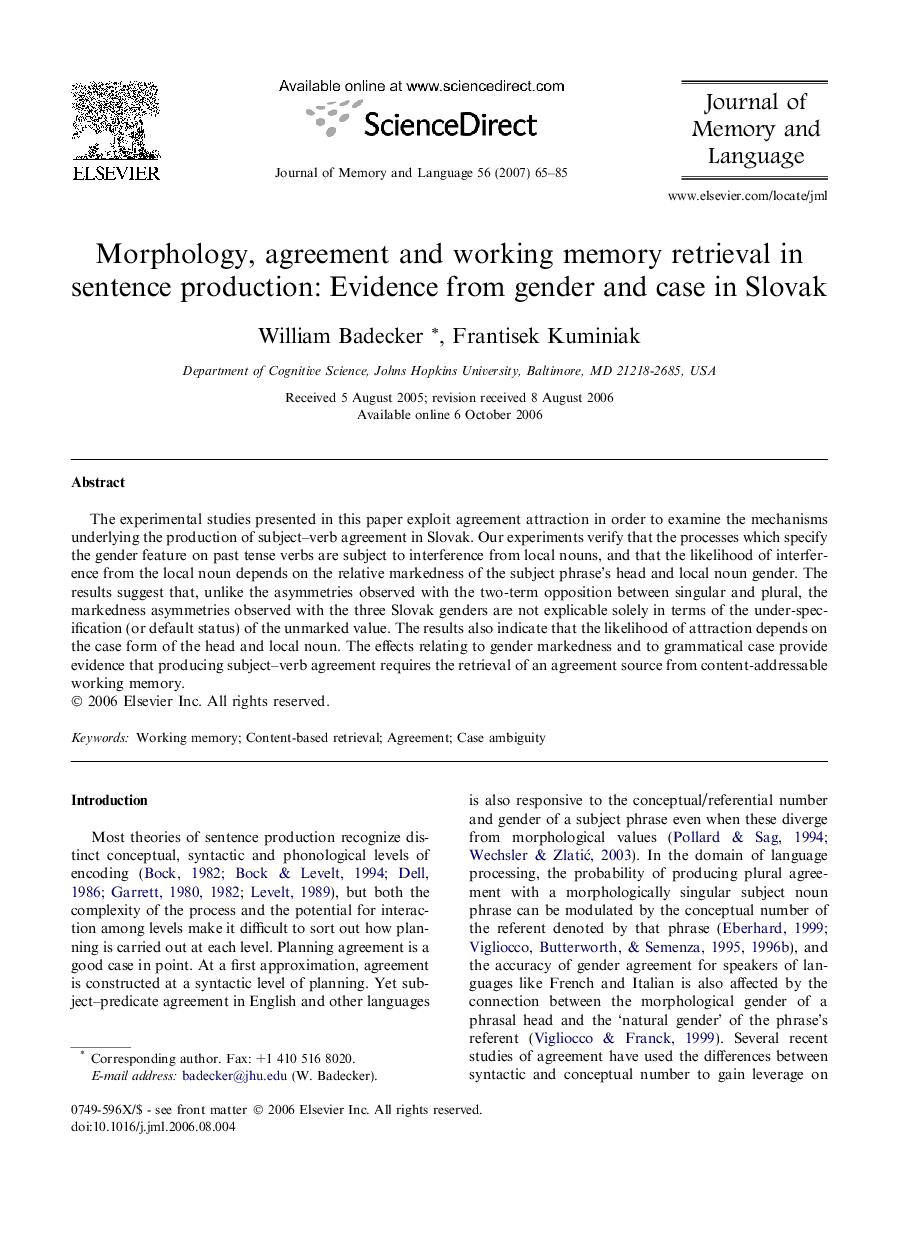| Article ID | Journal | Published Year | Pages | File Type |
|---|---|---|---|---|
| 932413 | Journal of Memory and Language | 2007 | 21 Pages |
The experimental studies presented in this paper exploit agreement attraction in order to examine the mechanisms underlying the production of subject–verb agreement in Slovak. Our experiments verify that the processes which specify the gender feature on past tense verbs are subject to interference from local nouns, and that the likelihood of interference from the local noun depends on the relative markedness of the subject phrase’s head and local noun gender. The results suggest that, unlike the asymmetries observed with the two-term opposition between singular and plural, the markedness asymmetries observed with the three Slovak genders are not explicable solely in terms of the under-specification (or default status) of the unmarked value. The results also indicate that the likelihood of attraction depends on the case form of the head and local noun. The effects relating to gender markedness and to grammatical case provide evidence that producing subject–verb agreement requires the retrieval of an agreement source from content-addressable working memory.
